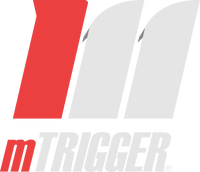UCL Injuries in Throwers
With the Spring sports wrapping up and Summer sports fully underway, now is a very appropriate time to talk about elbow injuries. Elbow injuries are most prevalent in throwing sports, notably baseball, where the elbow joint undergoes tremendous stress during the throwing motion making it susceptible to overuse.(1) In fact, 22-26% of injuries that occur in Major League Baseball involve the elbow joint.(1) Baseball requires a unique combination of strength and flexibility; a thrower must be loose enough to throw successfully (have enough lay back position), but stable enough as to not get injured.(2)
During the pitching motion, the flexor carpi ulnaris (FCU) and flexor digitorum superficialis (FDS) contract to resist valgus forces at the medial elbow joint.(3) Regardless, >50% of the load goes through the ulnar collateral ligament (UCL), predisposing it to becoming injured.(3)
Now, whether or not an elbow or UCL injury requires surgical intervention, rehabilitation back to throwing, especially at a high level, leaves little room for error. Thankfully, research studies done by leaders in the field have come to a consensus on the current best approach to rehab and exercise based on EMG data for elbow injuries in throwing athletes.(1,4)
Good scapular stability is crucial for being able to achieve the desired performance in overhead positions.(2) Scapular strength and isometrics can be initiated relatively immediately following surgery to prevent atrophy and promote proximal stability.(1) mTrigger is great for visually being able to see if a thrower is achieving the correct activation early on. 
Next, during the immediate phase, a “Thrower’s 10” program is often implemented with exercises that have shown substantial EMG activity of the targeted rotator cuff and scapulothoracic muscles.(1) At this point, there is an emphasis on increasing muscle activity, neuromuscular control, and endurance of the shoulder and elbow stabilizers which become essential for force production during throwing down the road.(2) Targeted muscles include scapular retractors, protractors, and depressors, which are commonly weak in overhead throwing athletes.(2) For example, lower trap activation, SL ER, prone row, and prone horizontal abduction are great ideas during this phase.(2) Furthermore, you can use mTrigger to get a more intense muscle contraction with a lower load.
Because of their anatomic proximity and orientation over the UCL, focusing on FCU, FDS, as well as pronator teres strength and stability can help to assist in stabilizing the UCL against valgus stress at the medial elbow and should not be overlooked.(1,5)
Once an athlete has progressed to a more advanced stage, you can begin to combine neuromuscular control, dynamic stability, muscular fatigue, endurance, and coordination into more challenging exercises.(1) Here we see a robbery exercise being performed on a stability ball.

Throwers who exhibit increased shoulder laxity have altered shoulder kinematics and muscle firing patterns of the rotator cuff.(4) In order to prevent injury to the shoulder and or elbow, optimizing these patterns is important. In these final videos, notice how mTrigger biofeedback helps to improve muscle activation of the serratus anterior during a dynamic hug and wall walk exercise.
Overall, by improving the strength and stability of the scapular muscles you begin to create a solid and robust foundation from which to throw. Excessive external rotation of the glenohumeral joint produces a valgus moment at the elbow; this improves the ability to control shoulder ER and strength of the scapular muscles will help to relieve stress on the medial elbow and thereby protect it during throwing.(5) This in turn often increases performance and throwing accuracy for players.(1)
More on biofeedback for shoulder injuries
|
See what the experts say
|
References
1. Wilk KE, Macrina LC, Cain EL, Dugas JR, Andrews JR. Rehabilitation of the Overhead Athlete’s Elbow. Sports Health. 2012;4(5):404. doi:10.1177/1941738112455006
2. Wilk KE, Arrigo CA, Hooks TR, Andrews JR. Rehabilitation of the Overhead Throwing Athlete: There Is More to It Than Just External Rotation/Internal Rotation Strengthening. PM R. 2016;8(3 Suppl):S78-S90. doi:10.1016/J.PMRJ.2015.12.005
3. Erickson BJ, Harris JD, Chalmers PN, et al. Ulnar Collateral Ligament Reconstruction: Anatomy, Indications, Techniques, and Outcomes. Sports Health. 2015;7(6):511. doi:10.1177/1941738115607208
4. Reinold MM, Escamilla R, Wilk KE. Current concepts in the scientific and clinical rationale behind exercises for glenohumeral and scapulothoracic musculature. J Orthop Sports Phys Ther. 2009;39(2):105-117. doi:10.2519/JOSPT.2009.2835
5. Ellenbecker TS, Wilk KE, Altchek DW, Andrews JR. Current Concepts in Rehabilitation Following Ulnar Collateral Ligament Reconstruction. Sports Health. 2009;1(4):301. doi:10.1177/1941738109338553


Leave a comment